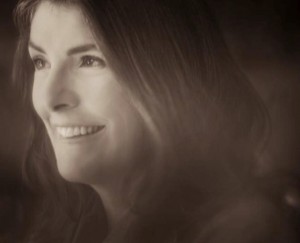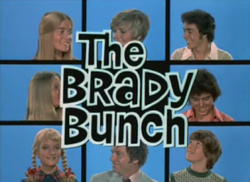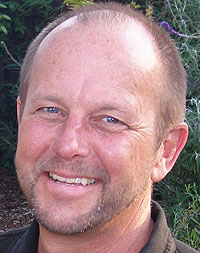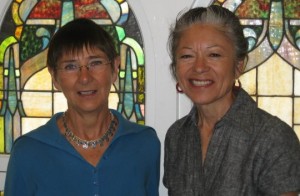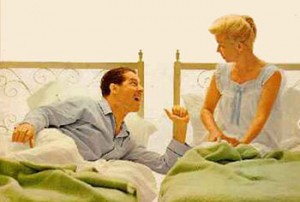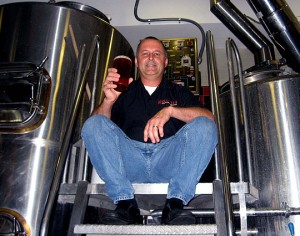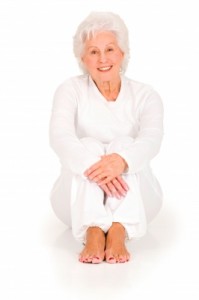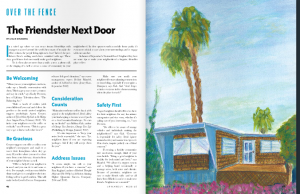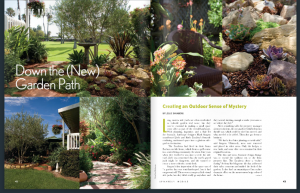Building on her lifelong interests in travel, fine art, and antiques, longtime local writer and editor Leslie Westbrook recently went public with her treasures, opening up a storefront, Leslie A. Westbrook, Art & Antiques, in Montecito’s upper village.
Leslie Dinaberg: Tell me about your new business venture?
Leslie Westbrook: I used to have an antique shop 20 years ago on Coast Village Road (Basement Antiques). So when I travel, I’ve been a travel writer for a long time, I’ve bought things and brought them back and sold them, sort of to supplement my income, but not in a big way.
LD: So you took your air miles and went to Brazil.
LW: I thought I’ll go down and I’ll buy some stuff and I’ll bring it back and I can sell it to collectors and/or consign it or sell it to shops. My area of interest and emphasis has always been art, but from South American “Santos,” because I’ve always liked them and been interested in them. So I went down there, I spent four days going to flea markets and a couple of antique dealers down there that I know and I bought a bunch of stuff. And I have a friend, sort of like my Brazilian son, he speaks Portuguese and helps me. Then I went off to Argentina and I said “here’s the money, ship this off DHL.”
LD: Now I know you and Miguel Fairbanks (who runs a wedding, event and portrait photography business in the back studio) are old friends.
LW: Yes and I just happened to say to him, “what are you doing with this space?” And he said, “You know, I need to rent it. Do you want to rent it?” … I wrote a check.
Three days later customs went on strike and held all of my goods and they’re still down there. … All of the sudden I had an empty shop, so I thought, I’d better get creative. I had a few pieces from the previous shipment…. and then I have more art than I have wall space in my house, so I brought in a Toulouse Lautrec and a Manet and I sort of started tearing things off the walls. Then I looked for a couple of contemporary artists who were local but who weren’t really showing here, like sculptor Jim Martin (www.jimmartinsculpture.com) and mixed media artist Barbara Bouman Jay (www.barbaraboumanjay.com and Ed Lister, who is an English artist who lives in Montecito but still doesn’t show here. … And then I took some things on consignment so and I bought a few other things. But I’m still waiting for my stuff to come from Brazil.
LD: How is business?
LW: Little by little the word is getting out. It’s picking up. What is really good for me is the decorators and designers are discovering me.
LD: That’s great. It seems like this is kind of antiques area in the upper village. How does this business fit in with your writing?
LW: Well, interestingly enough, I’ve been writing for California Home for about ten years and I also contribute to Traditional Homes and I wrote years ago for Art and Antique newspaper, I was the west coast editor, so I’ve always had an interest in art and antiques and design and I spent years scouting houses and writing about people’s gorgeous houses, so that ties in nicely. I am very open if someone is either decorator or they have a beautiful home and they want to bring me a disk of photos to look at for submission because I actually sit here and write all day. I’m here with my laptop and pity the poor customer if I’m lost in reverie, I have to tear myself away and become a salesperson. But it’s really kind of like a writing studio with a lot of stuff around me for sale is what it’s kind of turned into. And it’s nice to be writing here as opposed to being home alone–here I have more human contact. People come by which is really nice. So I have a shingle.
LD: I can definitely see where that would work. Do you think you’re still going to be traveling for your writing?
LW: I kind of tied myself down here. It’s a little bit of a dilemma. All of a sudden life I went oops, but I will have to go on buying trips if and when things get here and I have to replace them so in that event I’ll either get someone to sit here or I’ll close the door for a week and say gone buying. So right now I don’t have any travel plans but probably in October I’ll go back down to South America.
I wish I could clone myself so I could travel and be here. It’s a shift. Or if I do well enough at some point I could hire someone. I’m not in that position yet.
LD: When did you come to Santa Barbara?
LW: About 35 years ago. I came here to live on a hippie farm; Lambert Farm There’s a story I wrote about it in the new Carpinteria Magazine (http://carpinteriamagazine.com/). It was about 1973.
…. I grew up in Santa Monica but I used to come here in the summers. My best friend, her grandparents had Stewart Orchids, so we used to come up and stay at her grandparents’ house in Hope Ranch and that was when I was about 11 or 12,and then I met this boy at the Renaissance Faire and he lived on a farm called Lambert Farm with Kenny and Kathy Bortolazzo, they were married, and all these other people, so I moved up to live with him on this farm. It was this really cool place and it was all artisans and everybody had their own little Hobbity houses, outdoor bathrooms.
The romance was a summer romance but I fell in love with Santa Barbara and the love affair lasted with Santa Barbara.
LD: Were you always a writer?
LW: I always wrote. When I was first here after the hippie thing I worked as a cook on this estate and I made a documentary film and tried a lot of different things and I worked in advertising, and did headline writing and copywriting and then I turned into a travel writer. … I was an art major in college. I never finished school but I always loved to write and just 25 years later here I am, journalist, girl reporter. It’s fun to be interviewed though because I know when I’m interviewing people sometimes I want to share stories too.
LD: If you could pick three adjectives to describe yourself, what would they be?
LW: Gregarious or outgoing, compassionate, and honest.
LD: If you could be invisible anywhere in Santa Barbara, where would you go and what would you do?
LW: I would probably want to be in Oprah’s house (laughs), see what she needs and see where I could fill in a few holes.
Vital Stats: Leslie Westbrook
Born: Pasadena, June 14.
Family: “Mom, sister, dad, I don’t have a husband, I’m single, I don’t have any children, however I’m a fairy godmother.”
Civic Involvement: “I like to volunteer for different organizations every year, most recently I worked with Recording for the Blind and Dyslexic and the Art Museum Council. Lately I’ve been looking into bipolar people and working with FACT (families advocating for compassionate treatment).”
Professional Accomplishments: Journalist for 25 years; owns and operates Leslie A. Westbrook, Art & Antiques at 1482 East Valley Road, Suite 36, Montecito (805-969-4442).
Best Book You’ve Read Recently: Truth and Beauty by Ann Patchett
Little-Known Fact: “The men in my life all died, dumped me or went to jail!”

